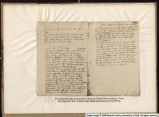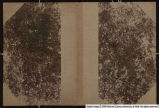| OCR Text |
Show LALANDE, JOSEPH JEROME LE FRANGAIS DE, 1732-1807 Art de faire le papier. In: Description des arts et métiers, published b the Académie des sciences. Volume 4. Paris, 1761. 20x 45 cm Thisisone of the mostimportant technical works of the eighteenth century on papermaking and is more complete than any book of the period There are fourteen large engravings (one folded) showing the entire process of the craft from sorting and cutting the rags to wrapping the finishe paper, One hundred and fifty pages of text are devoted to describing th plates MEERMAN GERARD 17224771 Syndici Roterodamensis, Admonitio de Chartae nostratis, seu lineae origine, Rotterdam, 1762 Meerman, aHollander, offered a premium of twenty-five ducats for th discovery of the time linen paper was first fabricated, Many specimen ‘were sent to him from all parts of Europe which were supposed to be earl Linen paper, but researches did not establish any definite conclusion regard ing the origin of linen as a material for paper LEWIS, WILLIAM, 1714178 Commercium philosophico-technicum; or, T he philosophical commerc of arts: designed as an attempt toimprove arts, trades, and manufactures London, 1763. 17x26 cm On page 393 of this volume will be found a short treatise on the subjec of paper under the heading: "Of the preparation of the paper for durabl writing STRANGE, JOHN, 17324799 Letter on the origin of the natural paper of Cortona, with other observations relative to the uses and excellent qualities of the Conferva o Pliny. Pisa, 1764 Jobn Strange, an English diplomatistand traveler, wrote this descriptio of papermaking while visiting Italy. He tells about the paper of Cortona atownof Tuscany, and givesa summaryof the use of broom, afabaceou shrub, and other plants for papermaking. While John Strange recommend Conferva for various uses he does not deem it suitable material from whic tomake paper. The researches made by Strangeare vagueand unimportant S Digital image© 2005 Marrott Library University of Utah, Allrights reserved |






























































